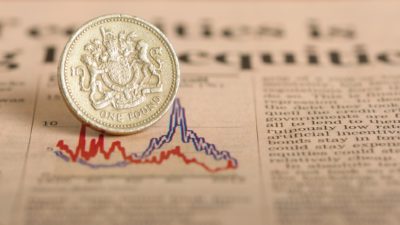How can you tell how profitable an oil company really is? With oil prices having made a strong recovery from their 2016 lows, most companies’ profits and margins are rising.
That’s good news for shareholders. But over the long term, rising profits don’t always translate into market-beating shareholder returns.
You see, oil companies annual profits are driven by operating costs per barrel in their reporting. But the cost of developing oil and gas projects is sometimes greater than the cost of operating them. Only by adding development costs and operating costs together can you understand the full-cycle cost.
This all-inclusive measure gives us a longer-term view on profitability. We can use it to estimate whether a company is generating real wealth for shareholders, or whether it simply recycles profits into new projects without any residual gains.
An easy alternative
Companies don’t always provide their full-cycle costs. But you can get an idea of how profitable a firm’s investments have been using a standard accounting metric called return on capital employed, or ROCE. This compares operating profit to the capital invested in a business.
To show you what I mean, I’ve calculated the six-year average ROCE for four oil companies:
|
Company |
6yr average return on capital employed (ROCE) |
|
Soco International (LSE: SIA) |
13.0% |
|
Royal Dutch Shell |
6.0% |
|
BP |
1.0% |
|
Premier Oil (LSE: PMO) |
-0.7% |
Why I like Soco
Vietnam-focused Soco has paid generous dividends for a number of years, while maintaining a net cash balance. It’s no surprise to me that it ranks highly for ROCE.
Perhaps by chance, Soco also recently published the full-cycle costs of an asset it’s planning to acquire. Merlon’s El Fayum asset in Egypt’s Western Desert has operating costs of just $6 per barrel, but a full-cycle break-even cost of $34 per barrel.
Both numbers look attractive to me, but what’s so interesting is the difference between them. Perhaps this focus on full-cycle costs is why Soco has historically generated a higher ROCE than many of its peers.
After recent falls, it is one of the top shares on my oil market buy list.
What about the others?
Shell has already reduced net debt by more than $10bn from its 2016 peak. Alongside this, it’s maintained a generous dividend and started buying back shares. There’s clear evidence here of strong cash generation, even if some of it has come from disposals.
By contrast, BP has maintained its dividend but only at the cost of rising debt. Overall returns have been low. At the bottom of the pile, Premier Oil has been forced into a massive refinancing and paid no dividends. Given this, you might ask why I own shares of Premier.
Management and assets
The answer is that I rate Premier’s operational management quite highly, and I believe the company has good quality assets.
Timing has been poor in recent years, but I think management should be able to deliver on expectations to cut debt and double profits in 2019. If I’m right, then the stock’s 2019 forecast P/E of 4.3 should leave room for considerable gains from current levels.
However, I won’t keep the shares for the long term unless I see evidence that return on capital employed is rising to attractive levels — which I would view as 10%-15% while oil prices remain high.







